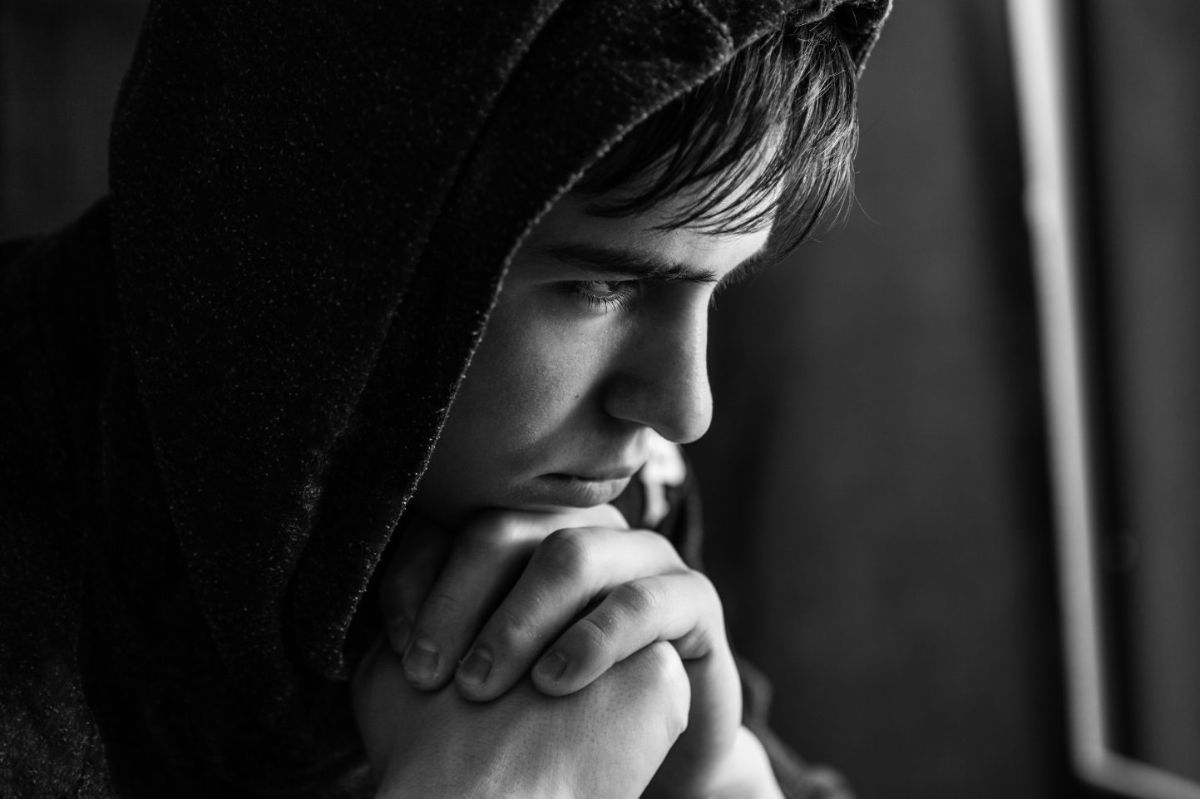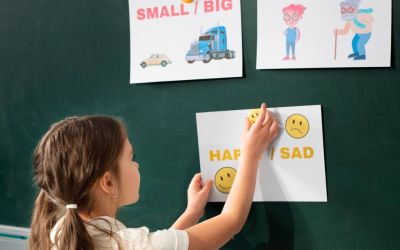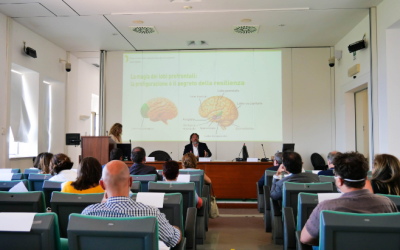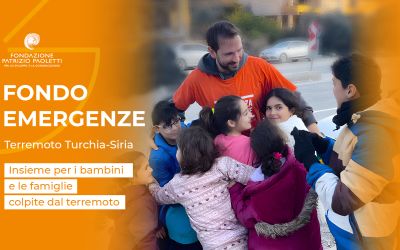
Stiamo vivendo una crisi globale dell’autostima?
L’educazione alla valorizzazione di sé in risposta all’emergenza della salute mentale in adolescenza
Sono molti i fattori che sembrano indicare una grave crisi nella capacità di autostima tra gli adolescenti. Dal boom della chirurgia estetica, passando per l’incremento dei fenomeni di ansiaL'ansia è una risposta emotiva caratterizzata da sentimenti... Leggi e depressioneLa depressione è un disturbo caratterizzato da una tristezz... Leggi, fino al moltiplicarsi di casi di suicidio Attenzione! Le voci del Glossario di Fondazione Patrizio P... Leggi tra gli studenti universitari. Il confronto con modelli sociali estetici e performativi, improntati a canoni spesso poco realistici, sta colpendo duramente le nuove generazioni. Sono i giovani, infatti, a trovarsi più di frequente impegnati in processi di auto-valutazione, spesso falsata da numerose pressioni sociali.
In una recente ricerca dell’Università Magna Grecia di Catanzaro, il 15,8% delle ragazze e il 3,3% dei ragazzi partecipanti hanno dichiarato di aver fatto ricorso alla medicina estetica. La legge vieta espressamente di sottoporre a diversi interventi di chirurgia estetica i minorenni, a motivo del fatto che possono avere conseguenze inattese e spiacevoli e anche perché il corpo in quell’età sta ancora modificandosi, col risultato che il ritocco può mutarsi negli anni in qualcosa di diverso dal risultato iniziale.
Il boom della medicina estetica soprattutto fra le ragazze assume ulteriore rilievo se accostato ai risultati della ricerca condotta in tutto il mondo da Edelman Intelligence per Dove nel 2019, nella quale le donne italiane si sono attestate al penultimo posto per autostima.
Una bassa autostima è associata a numerose conseguenze negative per la salute mentaleCosa si intende per salute mentale? Secondo l'Organizzazione... Leggi ed è stata collegata a diversi disturbi nel Manuale diagnostico e statistico dei disturbi mentali (DSM-5). Al contrario, un’alta autostima è stata correlata a un benessere mentale positivo, con più elevati livelli di felicitàLa felicità rappresenta uno stato emotivo caratterizzato da... Leggi, soddisfazione di vita e tendenza all’autovalorizzazione.
Ecco allora che la presenza o meno di autostima tra i più giovani diviene un focus importante in un tempo in cui si rileva un incremento fino al 18% dei casi di depressione e 14% per quelli di ansia tra gli adolescenti.
Il malessere tra i giovani, aggravato dalla pandemia da Covid19, si sta manifestando in modo allarmante anche attraverso l’aumento del tasso di suicidi. Secondo uno studio statunitense del 2020, il 20% degli studenti universitari ha riportato ideazione suicidaria correlata allo stressCos’è lo stress? Dal punto di vista clinico, lo stress è... Leggi. In Italia, secondo fonti Istat, al 2019, quindi prima della pandemia, si registravano annualmente circa 200 suicidi tra gli under 24, principalmente tra gli studenti universitari. Più in generale, nel nostro Paese nel 2021 sono stati registrati 220.000 ragazzi tra i 14 e i 19 anni insoddisfatti della propria vita e con scarso benessere psicologico, situazione che la pandemia ha sicuramente aggravato.
Nonostante l’allarmante aumento dei disturbi mentali e del malessere generalizzato tra i più giovani, c’è però ancora una forte difficoltà nel chiedere aiuto a causa dello stigmaLo stigma verso la salute mentale è definibile come il preg... Leggi sociale associato alle problematiche psicologiche. Uno stigma che si ricollega direttamente a quella che può essere chiamata una “crisi dell’autostima”, ossia una crisi nella crisi.
“Gli adolescenti di oggi stanno vivendo momenti di incertezzaL'incertezza è uno stato emotivo e cognitivo complesso che ... Leggi sempre più intensi nella loro ricerca di identità – sottolinea Patrizio Paoletti – e il passaggio fondamentale del processo ruota intorno alla consapevolezza e alla capacità dell’individuo di vivere una sana autostima. La ricerca del riconoscimento è, all’interno della nostra struttura sociale, l’elemento cardine che da sempre ci contraddistingue. Noi infatti siamo esseri sociali, perché nella relazione con l’altro cerchiamo e troviamo lo specchio per l’autodefinizione di noi. Impariamo ad essere conformi a quelle che sono le aspettative del nostro gruppo di riferimento”.
Un aspetto unico e rassicurante dell’autostima da un punto di vista educativo è la sua natura malleabile, soprattutto tra i bambini e gli adolescenti. L’autostima può essere allenata. Considerando l’associazione significativa tra autostima ed effetti sul benessere mentale è importante sottolineare che gli interventi educativi mirati a migliorare l’autostima potrebbero avere un impatto positivo sulla salute mentale. Il rafforzamento dell’autostima infatti è risultata efficace nella prevenzione, rappresentando un importante fattore protettivo nei confronti di depressione, ansia, solitudineUna definizione neuroscientifica e psicopedagogica La solitu... Leggi e mancanza di speranzaUna definizione psicologica e neuroscientifica La speranza ... Leggi.
Ma cos’è esattamente l’autostima?
Etimologicamente, il termine autostima indica l’atto di valutare sé stessi rispetto ad un parametro di misura. Tale valutazione di sé stessi viene definita in psicopedagogia in rapporto ai diversi fattori relativi alle parti che ci compongono:
- Fattori cognitivi: l’insieme dei riferimenti che l’individuo raccoglie riguardo sé stesso attraverso le proprie esperienze, la conoscenza che l’individuo si forma in questo processo;
- Fattori affettivi: intesi come grado di disponibilità dell’individuo ad aprirsi emotivamente e quindi indirizzare e ricevere espressioni emotive verso sé stessi e gli altri;
- Fattori sociali: quali l’appartenenza a gruppi sociali e la possibilità di avere un ruolo di influenza all’interno del gruppo ricevendone approvazione.
Uno degli aspetti più importanti dell’autostima è il suo carattere intrinsecamente soggettivo, in quanto prodotto dell’interpretazione personale. William James (1842-1910), tra i padri della moderna psicologia, definì l’autostima come il risultato della relazione tra il sé ideale e il sé percepito. In quest’ottica, il grado di autostima dell’individuo è dato da quanto la sua percezione di sé si avvicina al suo sé ideale.
In Pedagogia per il Terzo MillennioPedagogia per il Terzo Millennio (PTM) è un metodo interdis... Leggi, Patrizio Paoletti definisce una triangolazione dinamica tra il sé ideale, il sé percepito e ciò che Paoletti definisce con l’espressione “il me migliore di me”. Il “me migliore di me” rappresenta il punto di mediazione tra sé ideale e sé percepito che il soggetto riesce a trasformare in azione concreta nel suo quotidiano, svincolandosi dalle costrizioni di un ideale spesso troppo distante dalla percezione abituale di sé.
“L’autostima – scrive Patrizio Paoletti in “Crescere nell’eccellenza” – coltivata come un giardino che in primavera esprime il suo massimo splendore, nell’uomo è pietra angolare in grado di sostenere e dar vita al tessuto relazionale, unico strumento per la condivisione della propria esperienza”.
AUTOSTIMA
Come promuoverla
in classe e in famiglia
Compila il form
e guarda subito il webinar
"*" indica i campi obbligatori
Come apprendere a valorizzare sé stessi in modo sano e diventare modelli educativi per i più giovani?
Il passo inziale, da sperimentare innanzitutto su di sé per divenire capaci di guidare altri in questo processo, è l’accoglienza di sé stessi e della propria vita in quanto opportunità, quali che ne siano le condizioni in un momento dato. La constatazione obiettiva del fatto che la vita rappresenta di per sé un bene di cui essere grati, ci permette di guardare a noi stessi con sguardo compassionevole, capace di comprendere al tempo stesso meriti e difetti, senza esagerare i primi o negare i secondi. È un processo di presa di responsabilità nei confronti di sé stessi, un passo verso l’adultità come consapevolezza della nostra capacità di partecipare attivamente alla vita.
Una stima di sé sana è quella capace di trovare la giusta mediazione tra un ideale che può motivarmi a realizzare risultati significativi e le grandi e piccole disfatte che tutti noi come esseri umani non possiamo che sperimentare. Si tratta di un processo dinamico a cui educare noi stessi, prendendo consapevolezza del nostro costante divenire come possibilità, la possibilità di “vederci cambiare nel mondo che cambia”.
Nel compiere per noi stessi il processo di educazione ad una sana auto-valorizzazione, diveniamo testimoni ed educatori per altri, specialmente per gli adolescenti che, nella rapidità e profondità delle trasformazioni che attraversano, hanno estrema necessità di essere accompagnati. È proprio nella cangiante fase dell’adolescenza, infatti, che l’individuo è particolarmente sensibile a modelli e riscontri che giungono dal contesto sociali. Modelli e riscontri che divengono, per adesione, rifiuto, adattamento, quei parametri di misura con i quali valuta sé stesso nel mondo.
- Paoletti, P., and Selvaggio, A. (2011). Mediazione. Quaderni di PedagogiaLa pedagogia rappresenta un ponte tra le diverse discipline ... Leggi per il Terzo Millennio. Perugia: Edizioni 3P.
- Paoletti, P. (2008). Crescere nell’eccellenza. Roma: Armando editore.
- Liu, C. H., Stevens, C., Wong, S. H., Yasui, M., & Chen, J. A. (2019). The prevalence and predictors of mental health diagnoses and suicide among US college students: Implications for addressing disparities in service use. Depression and anxiety, 36(1), 8-17.
- Ebert, D. D., Mortier, P., Kaehlke, F., Bruffaerts, R., Baumeister, H., Auerbach, R. P., … & WHO World Mental Health—International College Student Initiative collaborators. (2019). Barriers of mental health treatment utilization among first‐year college students: First cross‐national results from the WHO World Mental Health International College Student Initiative. International journal of methods in psychiatric research, 28(2), e1782.
- Benjet, C. (2020). Stress management interventions for college students in the context of the COVID-19 pandemic.
Sii parte del cambiamento. Condividere responsabilmente contenuti è un gesto che significa sostenibilità










